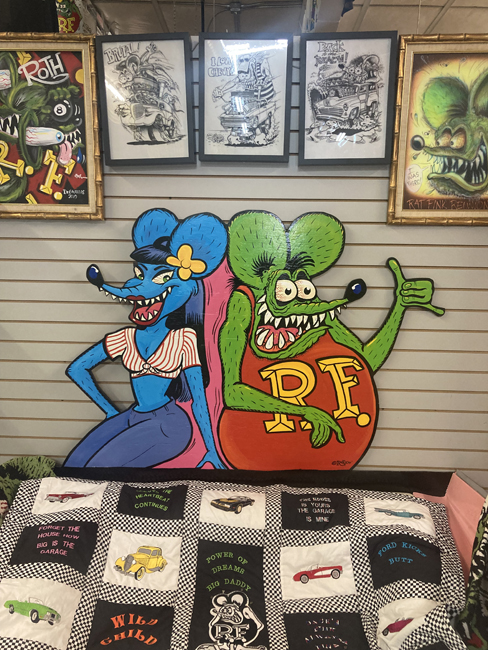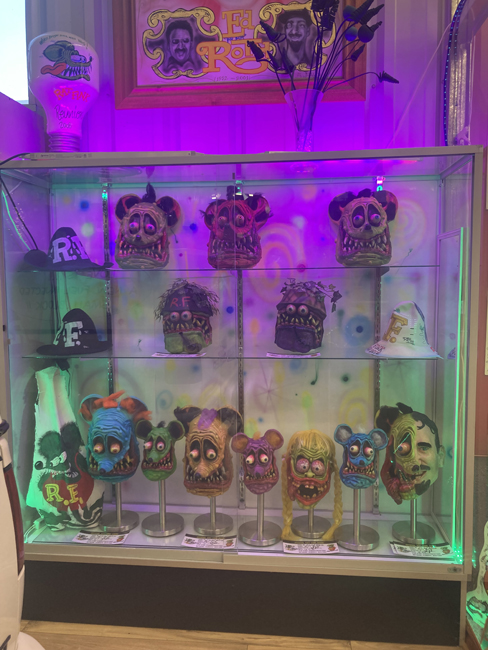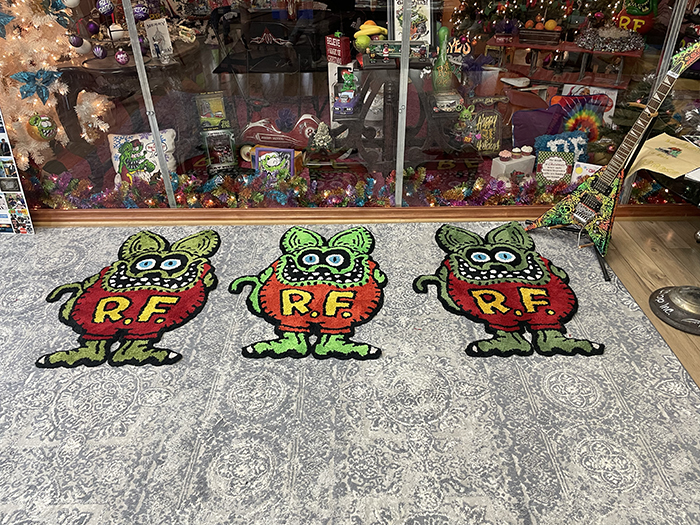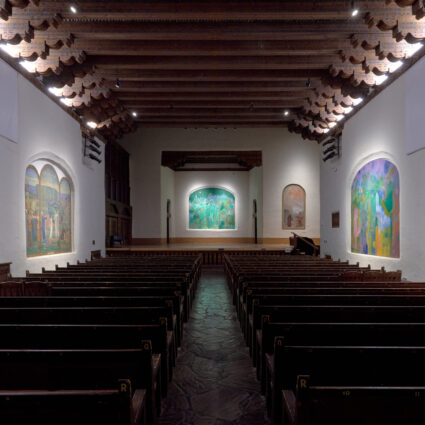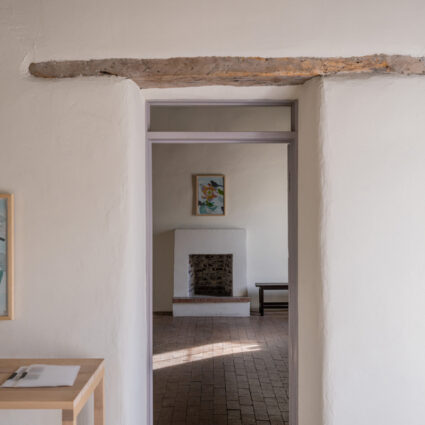Rat Fink Museum, curiously located in rural and religious Utah, celebrates Ed “Big Daddy” Roth’s inventive style that continues to influence present-day contemporary art.
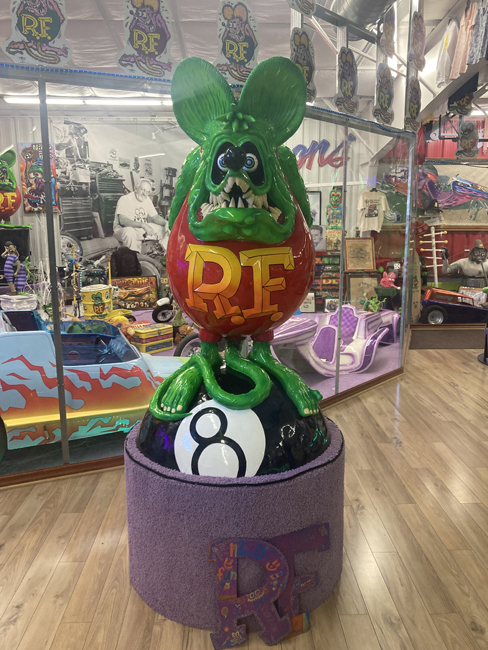
MANTI, UTAH—The city of Manti in Utah’s Sanpete Valley is quiet, religious, and mostly undisturbed—the biggest attractions include Main Street Pizza, the Manti Temple for the Church of Jesus Christ of Latter-day Saints, and the accompanying Pioneer Heritage Gardens. The city’s demographic reflects what most Christian rural cities carry: working-class families who make up the 3,040 population.
All year, Manti sits peacefully until the first week of June, when roads leading from all over the country to the well-behaved city of Manti rumble, and the charming, mid-sized homes shake. Some locals slam their blinds shut.
That’s because once a year, a cluster of bombastic low-riders, motorcycles, and hot-rods head straight to the heart of town to participate in the Ed “Big Daddy” Roth’s Rat Fink Reunion, hosted at the one and only official Rat Fink Museum.
While hot-rodding, kustom kulture, and drag racing are rarely considered part of Utah’s cultural touchstones, the Rat Fink Museum recontextualizes what should be considered art. As the presence of kustom kulture as an art form shakes up the art ecosystem in Utah and beyond, the museum also serves as a rich treasure trove celebrating and memorializing Ed Roth’s art style that has iconically shaped how 1950s kustom kulture is remembered.
What makes Roth so important to this subculture is how his fascination with modifying vehicles took shape over time. His passion for building cars and embellishing demonstrated that you did not have to be an engineer to build the car that you wanted. “All you really needed was imagination, some motorhead know-how, a lot of elbow grease, and gumption,” Roth, who settled down in Manti some years before he passed away in 2001, once said. This blew the doors wide open for gearheads and greasers, and Roth served as a leader and example for anyone and everyone who loved cars and wanted to build them.
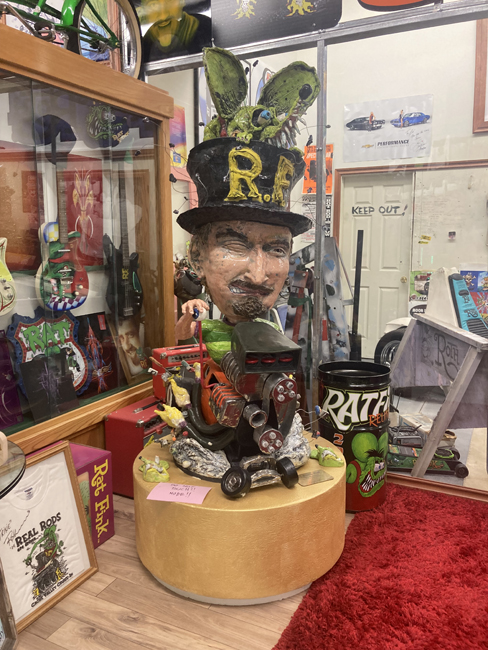
While building and modifying cars is a standalone art form, Roth’s Ratfink art created the branding and imagery for what we now know as kustom kulture. Roth’s most recognizable character, Rat Fink, is the quintessential reference for this scene at large. (“Ratfink” is often used to reference the culture at large while the character’s nomenclature is stylized “Rat Fink.”)
A perverse version, or mischievous alter-ego, of America’s beloved Mickey Mouse, the green, eye-bulging, fang-toothed rodent Rat Fink and his similarly fated girlfriend Trixie were the genesis for what is known as “Monster Hot Rod” art. If hot-rodding is the sport, Roth is the coach, Rat Fink is the mascot, and Trixie is the head cheerleader.
After Rat Fink and Trixie were created and popularized as a counterculture to what was flowing down the mainstream in the ’50s and ’60s, merchandise quickly followed. Automobilia became Ratfink’s playground, and Roth’s cartoons were printed on pretty much anything and everything. T-shirts, buttons, patches, rugs, clocks, and even mouse pads all had a moment in the spotlight as one of Roth’s canvases, and all have their proper pedestals at the museum. The staff at the Rat Fink Museum, established in 2006, contend that Roth is responsible for normalizing the t-shirt as a canvas for custom airbrushed fashion, ushering in the modern conception of the t-shirt.
Folks come to the Rat Fink Museum for many different reasons, the biggest being the annual Ed “Big Daddy” Roth’s Ratfink Reunion. Every year, Ratfink artists travel to Manti to offer live pin-striping, air-brushing, and other Ratfink art-making. Kustom kulture enthusiasts and participants come together for a car awards show, a 5k fun run, and to celebrate the life and works of Roth. Outside of the annual event, the museum hosts classes, school field trips, and other seasonal events.
Roth’s Ratfink art style is present in more places than most realize. You can see its influence in The Cramps’ cover art and tattoo parlors. References pop up in Roth and Sloane comics and in Frank Kozik’s poster work. Ratfink is similar to the Fast and Furious franchise in that they are both wildly popular, profitable, and timeless, but more importantly, they are both about family.
Since Roth’s death more than twenty years ago, his widow Irene has carried the legacy through events such as the reunion and spaces like the Rat Fink Museum. That legacy continues to influence folks and embolden them to see that being weird is cool, which, in a place like rural Utah, is a valuable message. Long after his departure from Earth, Ed “Big Daddy” Roth continues to build his Ratfink family and inspires us all to “Fink” differently.
